4-Phenylphenol
Synonym(s):4-Hydroxybiphenyl
- CAS NO.:92-69-3
- Empirical Formula: C12H10O
- Molecular Weight: 170.21
- MDL number: MFCD00002347
- EINECS: 202-179-2
- SAFETY DATA SHEET (SDS)
- Update Date: 2024-12-18 14:15:30
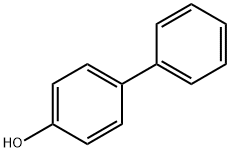
What is 4-Phenylphenol?
Chemical properties
light tan solid (odour threshold detection limit 0.7 ppm)
The Uses of 4-Phenylphenol
4-Phenylphenol is an intermediate for the production of varnish resins and nonionogenic emulsifiers which are used in the plant protection,polyurethane, and dyeing sectors.
The Uses of 4-Phenylphenol
Fluorescence and phosphorescence quantum yields and fluorescence and phosphorescence lifetimes were obtained for 4-phenylphenol adsorbed on filter paper with either NaCl, NaBr, or NaI at 296 and 93 K. The solid-surface fluorescence and phosphorescence quantum yield values and phosphorescence lifetime values were obtained for p-aminobenzoic acid (PABA) and 4-phenylphenol adsorbed on α-cyclodextrin/NaCl mixtures. 4-Phenylphenol is used as an antioxidant and is a potential EDC.
Definition
ChEBI: 4-Phenylphenol is a member of the class of hydroxybiphenyls that is biphenyl carrying a hydroxy group at position 4.
Preparation
4-phenylphenol synthesis: Add to a 50 ml round-bottom flask, in this order, 122 mg of phenylboronic acid, 414 mg of potassium carbonate, 220 mg of 4-iodophenol, and 10 ml of deionized water. Weigh in a suitably sized container 3 mg Pd on C 10%, add 1 ml of deionized water, and stir gently by hand to form a slurry that is then transferred to the reaction flask. 
Couple the flask to a water-jacketed condenser, and reflux the mixture on a hot plate with a magnetic stirrer vigorously for 30 min (until a precipitate appears). After this time, switch off the plate and allow to cool to r.t. Add HCl 2 M to an acidic pH (check with indicator paper). Separate the resulting solid, still containing the catalyst, by filtering with a Hirsch funnel. Wash the solid with 10 ml of water. Then, in a Hirsch funnel, add 10 ml of MeOH, and collect the filtrate in a clean container. Add to the resulting MeOH solution 10 ml of deionized water to obtain the precipitate of the product. Purify by recrystallization, heating in a water bath container with the precipitate and the MeOH/H2O mixture. If necessary, add 1 to 2 ml more of hot MeOH, to finish dissolving the solid. Filter under vacuum with a Hirsch funnel, air dry the solid (can recover the next day). Weigh and calculate the yield.
Synthesis Reference(s)
Tetrahedron, 40, p. 4981, 1984 DOI: 10.1016/S0040-4020(01)91336-5
Tetrahedron Letters, 36, p. 125, 1995 DOI: 10.1016/0040-4039(94)02191-D
General Description
4-Phenylphenol undergoes enzymatic polymerization and polymer developed is characterized by matrix-assisted laser desorption ionization time-of-flight mass spectrometry. It is the intermediate in manufacture of 4-alkyl substituted phenol-formaldehyde resins.
Safety Profile
Acute poison by intraperitonealroute. Questionable carcinogen with experimentalcarcinogenic and tumorigenic data. When heated todecomposition it emits acrid, irritating fumes.
Purification Methods
Crystallise the phenol from aqueous EtOH, *C6H6, and dry it in a vacuum over CaCl2 [Buchanan et al. J Am Chem Soc 108 7703 1986]. [Beilstein 6 IV 4600.]
Properties of 4-Phenylphenol
| Melting point: | 164-166 °C (lit.) |
| Boiling point: | 321 °C (lit.) |
| Density | 1.0149 (rough estimate) |
| vapor pressure | 0Pa at 25℃ |
| refractive index | 1.6188 (estimate) |
| Flash point: | 330 °F |
| storage temp. | Sealed in dry,Room Temperature |
| solubility | methanol: soluble50mg/mL, clear, colorless |
| form | Flakes |
| pka | 9.55(at 25℃) |
| color | White to slightly yellow |
| PH | 7 (0.7g/l, H2O, 20℃) |
| Water Solubility | 0.7 g/L (20 ºC) |
| Merck | 14,7305 |
| BRN | 1907452 |
| Stability: | Stable. Incompatible with strong oxidizing agents, strong bases, halogens. Combustible. |
| CAS DataBase Reference | 92-69-3(CAS DataBase Reference) |
| NIST Chemistry Reference | p-Hydroxybiphenyl(92-69-3) |
| EPA Substance Registry System | 4-Phenylphenol (92-69-3) |
Safety information for 4-Phenylphenol
| Signal word | Warning |
| Pictogram(s) |
 Exclamation Mark Irritant GHS07  Environment GHS09 |
| GHS Hazard Statements |
H315:Skin corrosion/irritation H317:Sensitisation, Skin H411:Hazardous to the aquatic environment, long-term hazard |
| Precautionary Statement Codes |
P261:Avoid breathing dust/fume/gas/mist/vapours/spray. P264:Wash hands thoroughly after handling. P264:Wash skin thouroughly after handling. P272:Contaminated work clothing should not be allowed out of the workplace. P273:Avoid release to the environment. P280:Wear protective gloves/protective clothing/eye protection/face protection. P302+P352:IF ON SKIN: wash with plenty of soap and water. |
Computed Descriptors for 4-Phenylphenol
4-Phenylphenol manufacturer
JSK Chemicals
New Products
(S)-3-Aminobutanenitrile hydrochloride 4-Methylphenylacetic acid N-Boc-D-alaninol N-BOC-D/L-ALANINOL Tert-butyl bis(2-chloroethyl)carbamate 3-Morpholino-1-(4-nitrophenyl)-5,6-dihydropyridin- 2(1H)-one Furan-2,5-Dicarboxylic Acid Tropic acid 1-Bromo-3,5-Di-Tert-Butylbenzene S-2-CHLORO PROPIONIC ACID ETHYL ISOCYANOACETATE 2-Bromo-1,3-Bis(Dimethylamino)Trimethinium Hexafluorophosphate 4-IODO BENZOIC ACID 3-NITRO-2-METHYL ANILINE 1-(2,4-DICHLOROPHENYL) ETHANAMINE (2-Hydroxyphenyl)acetonitrile 4-Bromopyrazole 2-(Cyanocyclohexyl)acetic acid 4-methoxy-3,5-dinitropyridine 1-(4-(aminomethyl)benzyl)urea hydrochloride 2-aminopropyl benzoate hydrochloride diethyl 2-(2-((tertbutoxycarbonyl)amino) ethyl)malonate tert-butyl 4- (ureidomethyl)benzylcarbamate Ethyl-2-chloro((4-methoxyphenyl)hydrazono)acetateRelated products of tetrahydrofuran

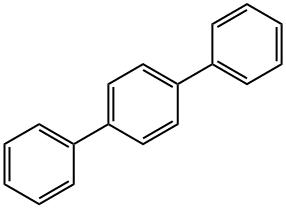


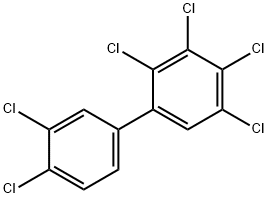
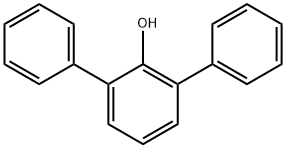
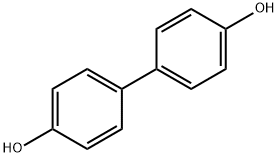
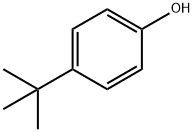
You may like
-
 92-69-3 4-Phenylphenol, 98% 99%View Details
92-69-3 4-Phenylphenol, 98% 99%View Details
92-69-3 -
 4-Hydroxybiphenyl CAS 92-69-3View Details
4-Hydroxybiphenyl CAS 92-69-3View Details
92-69-3 -
 4-Phenylphenol CAS 92-69-3View Details
4-Phenylphenol CAS 92-69-3View Details
92-69-3 -
 4-Phenylphenol CAS 92-69-3View Details
4-Phenylphenol CAS 92-69-3View Details
92-69-3 -
 p-HYDROXY DIPHENYL For Synthesis CAS 92-69-3View Details
p-HYDROXY DIPHENYL For Synthesis CAS 92-69-3View Details
92-69-3 -
 1975-50-4 98%View Details
1975-50-4 98%View Details
1975-50-4 -
 14714-50-2 (2-Hydroxyphenyl)acetonitrile 98+View Details
14714-50-2 (2-Hydroxyphenyl)acetonitrile 98+View Details
14714-50-2 -
 118753-70-1 98+View Details
118753-70-1 98+View Details
118753-70-1